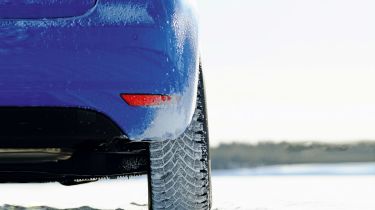Winter tyre alternatives
We pick from three alternatives to pricey winter tyres

As temperatures drop, many drivers will be thinking about how to keep moving through the winter. And snow will be the main worry – not only does it bring the road network to a standstill, it can also leave you stranded or unable to get out of your drive.
Winter tyres are the ultimate solution. They’ll get you through snow and ice, plus provide the best grip on cold and wet roads. However, they’re not cheap – our Continental ContiWinterContact TS 850 Best Buy costs around £100 per tyre. And that’s before the £40-odd a year if you want a garage to store your summer tyres, plus the £150 or so you’ll pay for a set of spare steel wheels. So are there alternatives that are easier on the pocket?
Chains are the traditional way to get through snow, and they’ve been joined by socks in the past decade. There’s even a spray that aims to increase tyre grip in snow.
Do these solutions work? We put them through two tests in frozen Sweden to find out.
How we did it
As these products are sold as winter tyre alternatives, we put them through the same traction test we usually subject winter tyres to – accelerating hard from walking pace in second gear and measuring the g-force generated.
We carried out two of these tests: one on about 4cm of powdery snow over a compacted layer, and another on compacted snow, where there was more grip. An average was taken from several runs in each.
To show how these products compare, we did the same tests with winter and summer tyres. The top-performing winter tyre got a score of 100 per cent; the alternatives were rated relative to this.
Verdict
Winter tyres are still the best solution for driving on snow. But if you want a cheaper alternative, go for the easy-to-use socks, which give great grip. Chains last longer, but are less convenient and less grippy. The spray is ideal for emergencies – and all three products are an improvement on summer tyres in the snow.






